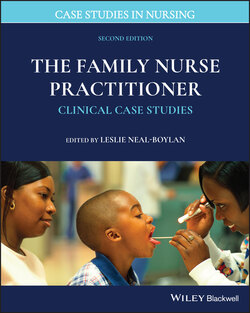Читать книгу The Family Nurse Practitioner - Группа авторов - Страница 12
Оглавление
Introduction
By Leslie Neal‐Boylan, PhD, APRN, CRRN, FAAN, FARN
Family practice is not simply the practice of caring for individuals across the lifespan. Contrary to the perceptions of many students who enter the world of family practice, it is not simply to care for people “from womb to tomb.” Practice that is guided by that philosophy risks missing so much, not only regarding the individual patient’s own health but the family dynamics and the tangible and intangible aspects of the family that impact the individual patient. If the “family” aspect of family practice is ignored or neglected, then the clinician is simply caring for individuals as any clinician would and cannot really style themselves as a family practice clinician regardless of title or certification.
To practice as a family practice clinician, it is important to have a basic understanding first about what is meant by “family” and then how the family is integrated into the plan of care and ultimately often becomes the “patient.” In previous work about home health clinicians, this author found that home health clinicians care for the “patient entity,” which is defined as all those who impact or potentially impact the patient’s health. In family practice, the clinician also cares for and, at the very least, considers the patient entity when developing and pursuing a plan of care for an individual who seeks health care.
The meaning of “family” has undergone significant societal change. Consequently, it is important that the clinician not make assumptions about who is “family” and who is not. It is important to ask the patient who they consider their family. As I write this, society, both nationally and globally, is undergoing the crisis brought on by the coronavirus. Aside from the medical implications, the virus is already having an impact on how people interact with each other. We are required to practice “social distancing,” which requires us to maintain our relationships, whether personal or professional, in other ways besides close proximity or touching. Neighbors are calling to check in on the elderly, especially those who don’t have family nearby, and older adults are checking on the young parents in their neighborhoods who are working from home while trying to manage children who are unable to attend school due to the pandemic. What is the definition of family during a crisis like this? How will we keep each other from becoming socially isolated?
Crises like these imply a new definition of family. Technology allows us to keep in contact despite the prohibition on being physically within six feet of another human being. A crisis like this reminds us how vulnerable we are as human beings, not only to disease but to loneliness and despair. Knowing that others care about us takes on even greater significance. We are reminded that “family,” however we define it, is crucial to our survival.
As clinicians, we are just as vulnerable but have the advantage of a vast store of medical knowledge. As laypersons disseminate misconceptions about how to prevent and treat the virus, nurse practitioners and our health professions colleagues are stepping up to make sure the public has accurate health care information.
Our care of individuals and families does not just take place in the clinic or health care setting. It occurs via every encounter we have with the people in our communities and across cyberspace. The coronavirus crisis illustrates that while we have better means of communication than in years past, we are also vulnerable to more misinformation.
The cases in this book were chosen in an attempt to illustrate mostly typical (and some atypical) cases that occur in family practice. Remembering the impact “family” has on our physical and mental health and that the patient is part of a subsystem within the larger family system can help the reader see that the patient’s illness or condition not only impacts the patient but potentially has a ripple effect on many others both within and outside of the family system.
